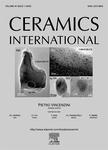版权所有:内蒙古大学图书馆 技术提供:维普资讯• 智图
内蒙古自治区呼和浩特市赛罕区大学西街235号 邮编: 010021

作者机构:Northwestern Polytech Univ Sch Mech Engn Xian 710072 Peoples R China Northwestern Polytech Univ Inst Med Res Xian 710072 Peoples R China
出 版 物:《CERAMICS INTERNATIONAL》 (国际陶瓷)
年 卷 期:2020年第46卷第5期
页 面:6663-6671页
核心收录:
学科分类:08[工学] 0805[工学-材料科学与工程(可授工学、理学学位)] 080502[工学-材料学]
基 金:National Natural Science Foundation of China Fundamental Research Funds for the Central Universities of China Innovation Platform of Biofabrication of Shaanxi Province [17SF0002] Key Research and Development program of Shaanxi Province [2018ZDXM-GY-133]
主 题:Polymeric binders Hydroxyapatite Powder-based 3D printing Printability
摘 要:As the basic material of 3D printing, the binder is the key factor to a successful 3D printing process as it determines the property and structure of the printed bone scaffolds, as well as the reliability of the entire printing system. In this study, three commonly used polymeric binders (PVA, PVP and PAM) were applied to fabricate HA embryonic scaffolds by powder-based 3D printing technology. The suitable printing concentrations of three binders were screened by investigating their printability and drop penetration. Following, based on the printable binders, different scaffold samples were fabricated and characterized. And the effects of different binders on the properties of scaffolds were investigated in terms of mechanical properties and cell attachment. Results show that the binder of 1.0 wt% PVA and its scaffolds possess the best the printing resolution, solidification ability and compressive strength, while the binder of 1.5 wt% PVP and its scaffolds possess the shortest penetration time and the largest compressive modulus. Additionally, the cell culture experimental results demonstrate that the scaffolds printed with 1.0 wt% PVA process the best cytocompatibility and are most conducive to cell attachment among three binders. Therefore, comprehensive considering the current results of three binders we conclude that among three binders the binder of 1.0 wt% PVA is most suitable for fabricating HA bone scaffolds by 3D printing technology.